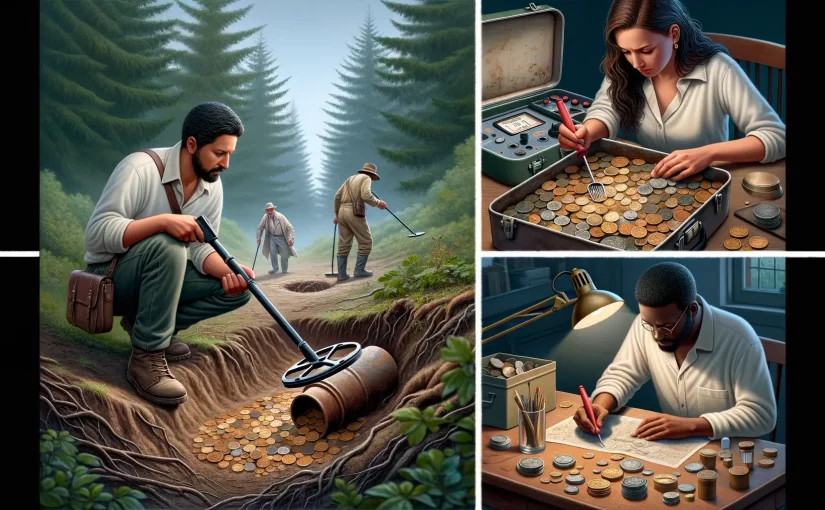Understanding Coin Hoards and Their Historical Context
The Hidden Treasures Beneath Our Feet
Imagine walking across a quiet field, the wind brushing your face. Beneath your very feet, perhaps just inches below, lies a story frozen in time—a coin hoard. These collections of buried coins are more than clutches of metal; they’re whispers from the past, secreted away by hands long gone. Whether hidden during a time of war, famine, or chaos, coin hoards represent both desperation and hope, as if their owners believed the ground could guard their fortunes until safer days arrived.
Each hoard carries its own tale. A Roman denarius unearthed in modern-day Turkey might tell of an empire at its peak, whereas a stash of Viking silver scattered across a windswept English farm speaks of raiders turned settlers. These treasures don’t just sit there—they pulse with history, waiting for us to decode them.
- Why were these coins hidden? Fear of invasion, financial upheaval, or simply secure savings?
- Who buried them? Merchants? Soldiers? Ordinary families caught in extraordinary events?
A coin hoard is like a snapshot of life paused mid-motion, and when uncovered, offers us unparalleled glimpses into moments of triumph, tragedy, and transition.
The Geography of Coin Hoards: What Lies Where?
Where we find coin hoards is almost as fascinating as what’s inside them. Picture the chaotic swirl of an ancient battlefield. Soldiers, unsure if they’d see another sunrise, might bury their pay beneath a tree. In bustling trade hubs, like Alexandria or Antioch, merchants may have stashed silver and gold within walls or under flagstones for safekeeping.
Interestingly, some hoards appear in the most curious places—like a 1,500-piece collection discovered inside a hollowed-out statue in France or coins meticulously sealed in ancient pottery and dropped into wells. The surroundings matter. A coin’s resting place isn’t random; it reflects human decisions shaped by topography, culture, and circumstance.
The landscapes tell their own stories too. Fields once ripe with crops are now archaeological hotspots, while riverbanks that served as trade routes reveal caches hidden centuries ago. When you think about it, every patch of ground could hold its own treasure chest of history—hidden, forgotten, but never truly lost.
Methods for Discovering and Excavating Coin Hoards
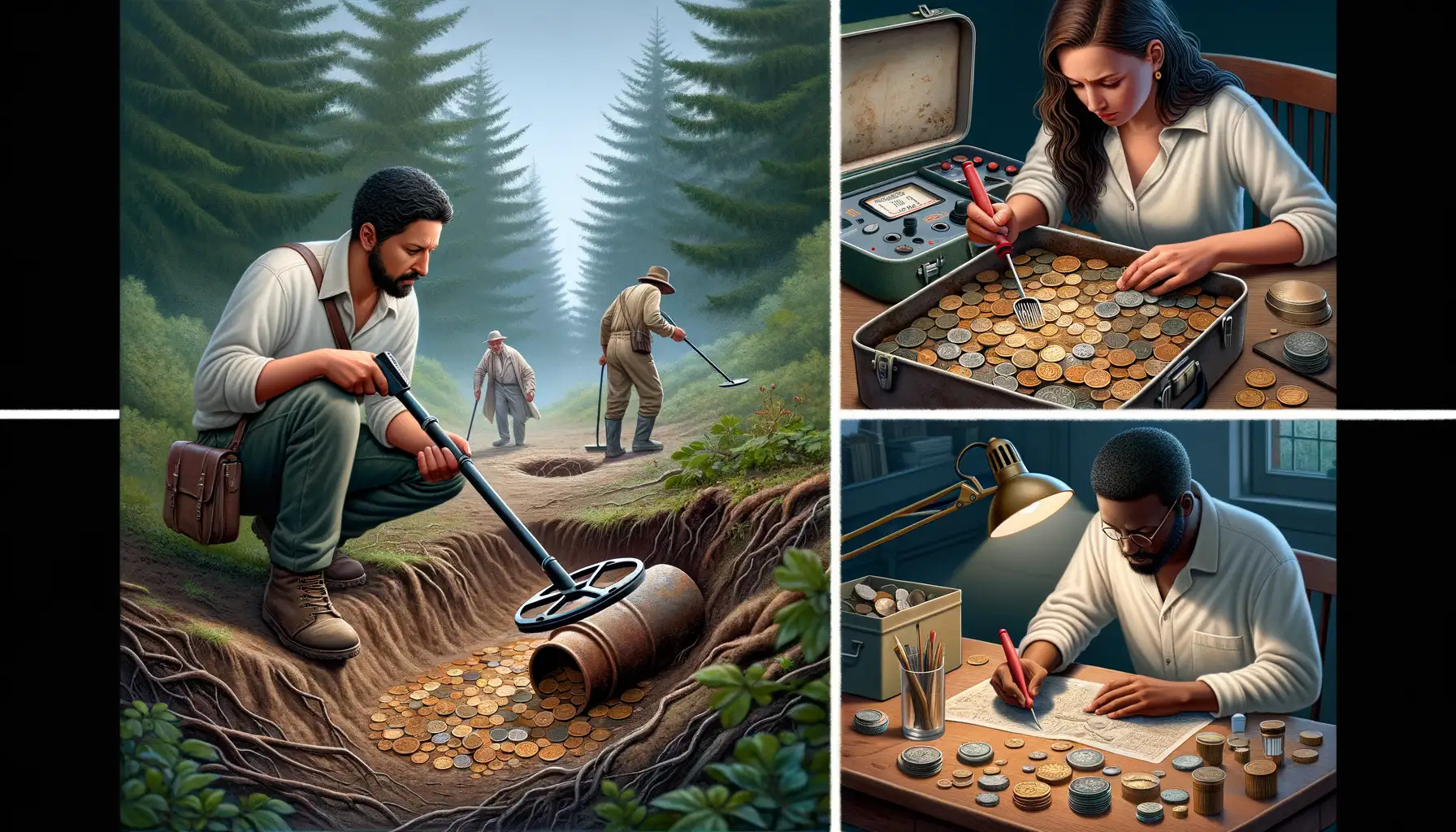
Uncovering Hidden Treasures: Discovery Techniques
Imagine standing in a sunlit field, metal detector in hand. A sudden, thrilling beep pierces the air—could it be? The journey to find coin hoards often begins with tools like these, but that’s only the start of the adventure.
Modern technology has revolutionized discovery methods. Archaeologists now use **ground-penetrating radar** (GPR) to peer into the earth without disturbing it, revealing hidden anomalies. Drones, equipped with thermal imaging, scan vast terrains for subtle surface changes that might indicate buried treasures.
Natural clues are just as valuable. Ever notice how plants grow differently in certain spots? A patch of lush grass may hint at soil disturbed centuries ago—a signal that an ancient cache might be resting below.
But let’s not forget the element of surprise. Many hoards emerge unexpectedly during construction or farming, as if they were waiting for the exact right moment to rejoin history.
- Pro tip: Historical records can offer critical leads! Old maps, folklore, and even medieval tax documents occasionally point to stashes.
- Always investigate areas near abandoned trade routes or river crossings—prime hiding spots for valuables in times of chaos.
The Artful Excavation: Patience Meets Precision
Once a hoard is located, the real challenge begins: bringing it to light without losing its story. Excavation is like reading a fragile, ancient book. Tear one page, and you risk destroying the context forever.
First, archaeologists carefully document the site through sketches, 3D models, and photographs. Every rock, root, or speck of dirt has a tale to tell. Then comes the delicate task of removing soil layer by layer with trowels, brushes, and sometimes even dental tools! Yes, you read that right—dental tools are perfect for precision work on small, intricate finds.
The position of every coin matters. Were they stacked, scattered, or placed inside a vessel? For instance, a hoard tightly packed inside a ceramic jar might suggest it was buried in haste, hinting at political unrest or an impending invasion.
Throughout the process, collaboration is key. Specialists like metal conservators and numismatists join forces to ensure that even the tiniest detail is preserved for future generations. Excavating isn’t just about finding treasure; it’s about unfolding a human story, one coin at a time.
What Coin Hoards Reveal About Ancient Societies
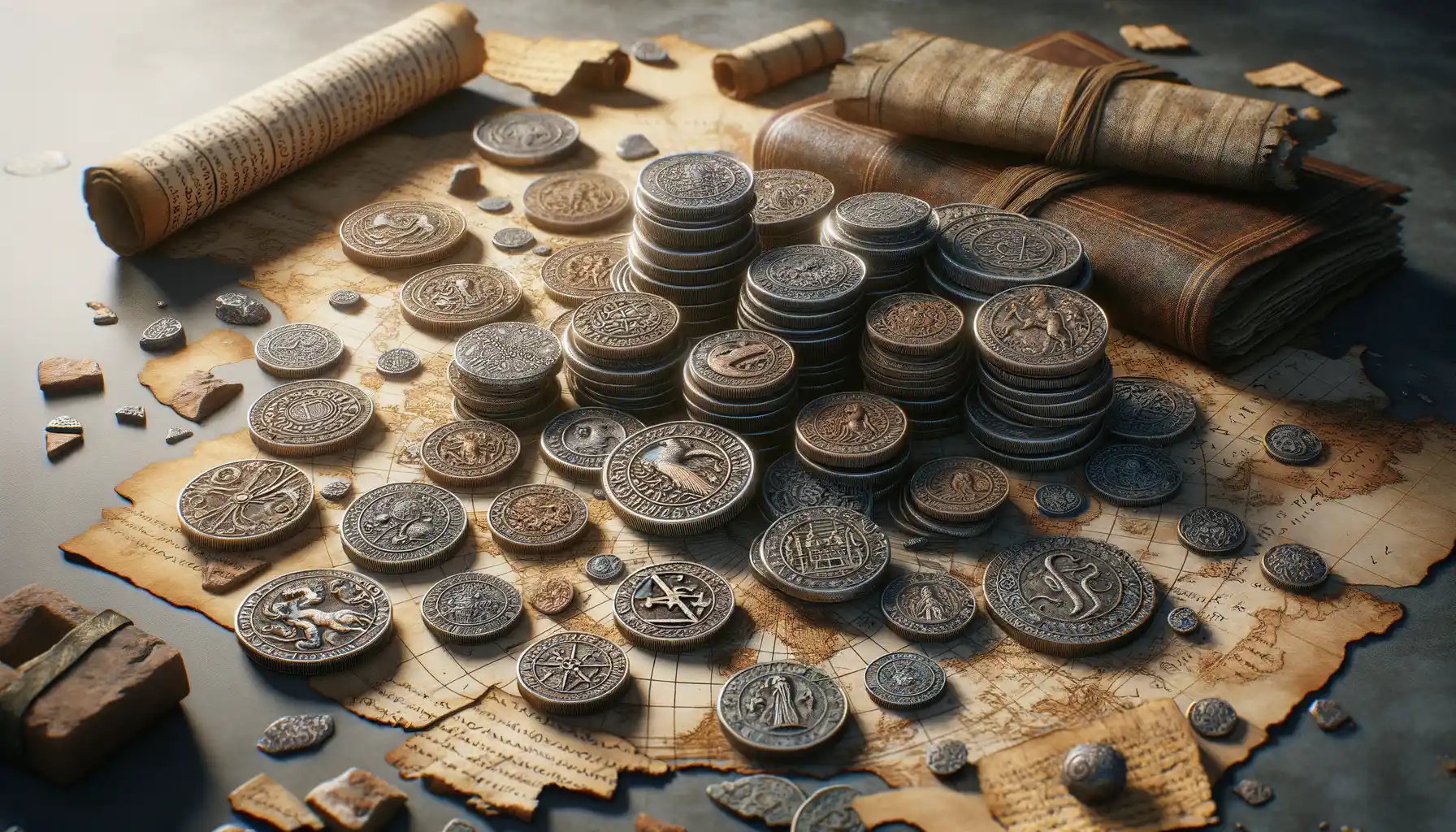
Windows into Forgotten Worlds
Imagine holding a handful of ancient coins, their surfaces worn smooth by centuries of whispers and exchanges. Each coin tells a story, not just of wealth but of who people were, what they valued, and how they connected with the world around them. Coin hoards—those buried treasures hidden either in fear or foresight—are like secret messages from the past. They offer us a snapshot of life frozen in time.
For example, a hoard unearthed in a remote village might reveal a surprising trade connection with a distant empire. Suddenly, you’re not just talking about coins; you’re talking about silk routes, salt caravans, and the spread of knowledge. Hoards often reflect periods of chaos or uncertainty. Why bury your savings if the world wasn’t on edge? War, invasions, or even economic collapse—all these scenarios leave their fingerprints on these caches.
- What metals were used? It could signal access to resources or strategic alliances.
- Whose face was stamped on them? That’s a clue to political power—or propaganda.
- Were they local or foreign? This tells of bustling marketplaces or isolated economies.
The Humanity Behind the Hoards
Beyond trade and turmoil, coin hoards speak of people. You can almost picture a merchant clutching his savings, burying them in a fit of desperation, hoping to return one day. Or a farmer turning over the soil decades later, startled by their glint. These hoards are deeply personal, yet profoundly universal. They remind us that fear, ambition, hope—they’re not just emotions of today. They resonate across centuries, carried in each coin’s cold gleam.
Challenges and Ethical Considerations in Studying Coin Hoards
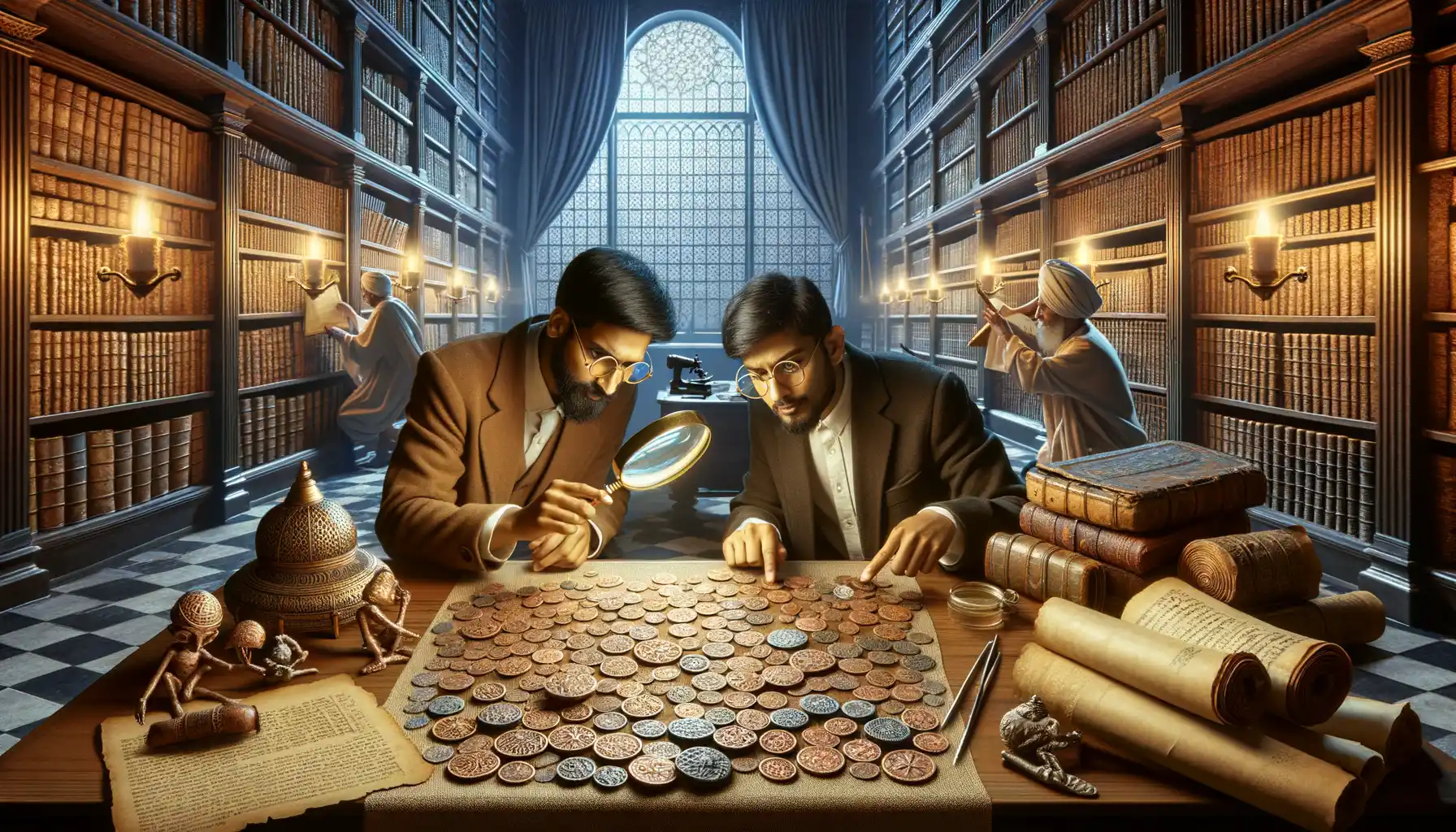
Unearthing Secrets: The Complex Path of Studying Coin Hoards
Peeling back the layers of history through coin hoards is as thrilling as it is challenging. Picture this: a treasure chest of ancient currency, each coin whispering stories of forgotten empires and bustling marketplaces. But the journey from discovery to scholarly insight isn’t all golden glimmers—it’s tangled with obstacles that demand both caution and conscience.
First, there’s the delicate dance between preservation and excavation. Coins are often buried in fragile vessels, sometimes crumbling urns or sacks woven centuries ago. Rushing to extract them can destroy invaluable context. Archaeologists must move with surgeon-like precision to avoid turning a historical puzzle into a jumble of meaningless metal.
Then comes the thorny realm of ethics. Coin hoards attract more than just scholars; looters armed with metal detectors can raid sites for profit, erasing critical archaeological evidence. And let’s not forget the legal maze: Who owns the hoard? The finder? The landowner? Or should it belong to humanity?
- Provenance issues: How do we ensure coins haven’t been stolen or illegally traded?
- Balancing curiosity and respect: Should every hoard be studied, or are some better left untouched?
Each hoard is a bridge to our ancestors—but only if studied wisely and ethically.
Future Directions in Coin Hoard Research and Archaeology
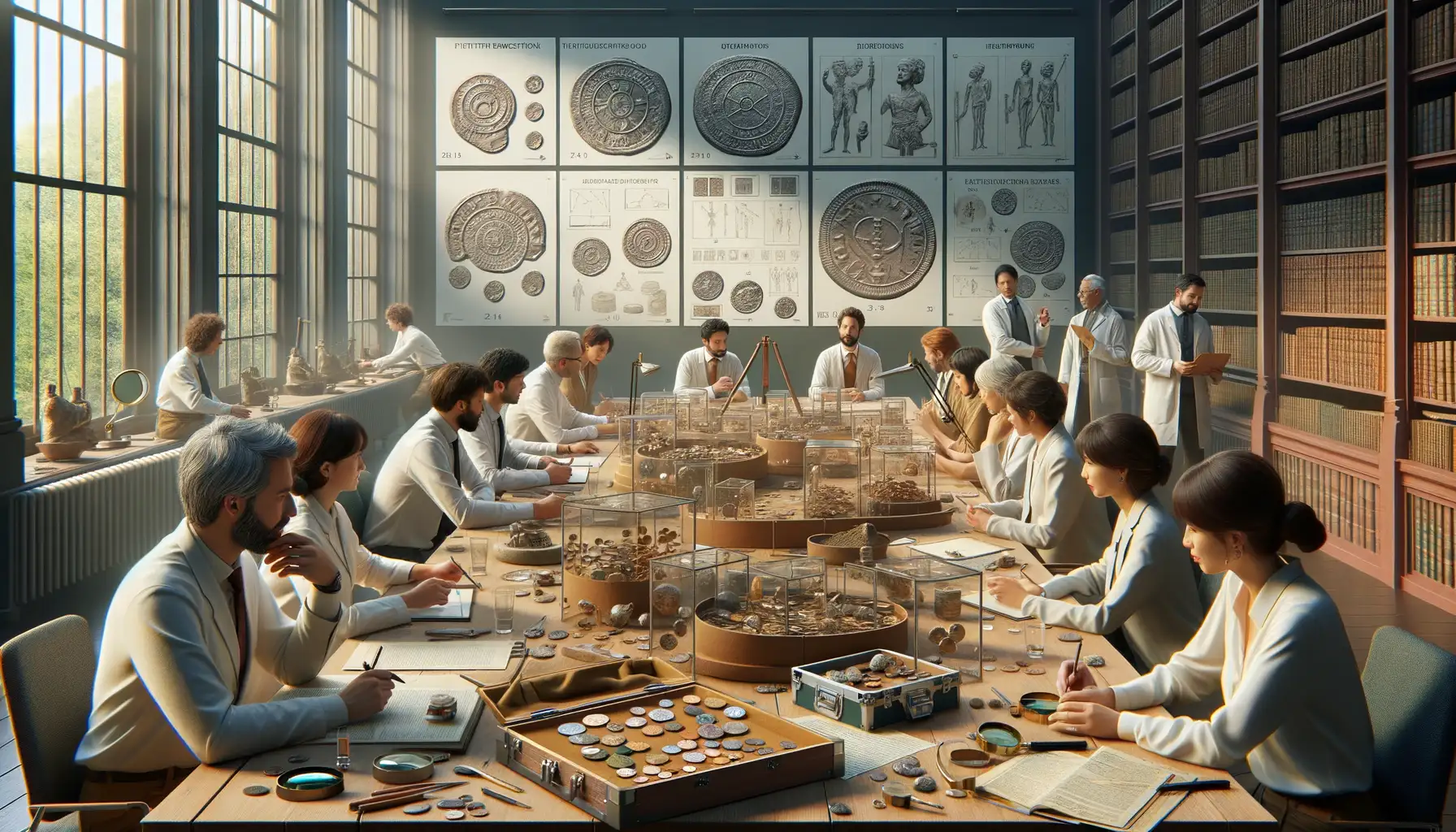
Unlocking New Stories with Advanced Technology
Coin hoard research is stepping into a bold new era, where technology is becoming the archaeologist’s sharpest tool. Imagine unlocking secrets buried for centuries with the precision of lasers or the keen eye of artificial intelligence—this is no longer science fiction. Techniques like X-ray fluorescence (XRF) now allow researchers to analyze the metal composition of coins without scratching or damaging their surfaces. It’s like peering into history’s soul without disturbing its delicate shell.
On another front, machine learning is turning patterns into whispers from the past. Algorithms can detect subtle connections between coin designs, mint locations, and trade routes—details too complex for the human mind to assemble in one lifetime. One algorithm might reveal that a set of Roman coins, thought random, actually maps out trade networks stretching across Europe. What stories are we poised to uncover next?
- 3D mapping: Visualizing entire ancient marketplaces by reconstructing hoards in their original contexts.
- Portable tech for fieldwork: Imagine handheld tools instantly identifying coinage origins as you dig!
A Call for Global Collaboration
Meanwhile, archaeology is shedding its old image of isolated researchers hunched over dusty artifacts. Today, the field is booming with global connections. Picture teams of experts from Egypt, Greece, and China sharing real-time data on a newly unearthed hoard via digital platforms. This isn’t just collaboration—it’s a worldwide dialogue about our shared human story.
At the same time, there’s a renewed push for inclusivity. Some researchers aim to involve local communities in discoveries, turning excavations into joint celebrations of heritage. A farmer in Spain who stumbles upon a treasure might not simply pass it to a museum but work side-by-side with archaeologists in studying its legacy. These shifts are rewriting the narrative of coin hoarding—literally putting more voices into the script. Who knew piles of old coins could spark such a revolutionary spirit?

